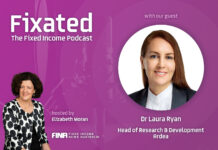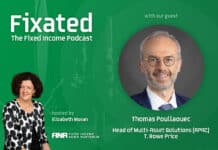
Globally, fixed income, equity and mixed asset funds attracted over A$93.8bn in 2024, a sharp increase from A$36.8bn in 2023, according to Calastone’s 2024 Global Fund Flows Report. While this collective inflow marks the second highest on Calastone’s record, it pales in comparison to the total A$2.0tn that transacted over the Calastone network in 2024, highlighting a year of diverse investor sentiment and conviction.
Australian Highlights: Bond fund flows at all-time-high, equity flows return
A$13.8bn of new capital was added to managed funds in 2024, a five-fold increase on 2023.
Australian investors were in step with global investors, setting a new record for bond fund inflows of $A12.2bn, up from A$4.5bn in 2023, surpassing the last all-time-high set in 2021.
The overall rise in managed funds investment also included a turnaround for equity funds, which saw inflows of A$380mn, compared with the A$1.60bn withdrawn in 2023. Notably, all equity inflows last year were directed toward ESG-focused equity funds, reversing the A$494.8mn in ESG equity fund outflows recorded in 2023, and bucking the global trend away from ESG. Calastone’s data, however, indicates that Australia was initially slower to adopt ESG investing relative to other markets, raising questions about whether this marks a unique shift or a lagging trend.
Mixed asset fund investing hit an all-time low in Australia, growing just A$68.0 million. This trend aligned with global flows to this asset class falling to a six year low.
Commenting on Australian flows, Marsha Lee, Head of Australia and New Zealand, Calastone said: “Managed bond fund inflows in Australia have consistently swelled year on year since 2019, showing investors in Australia have invested in fixed income with conviction and consensus.
“Equity funds staged a modest yet decisive turnaround, with every dollar of 2024 net inflows notably directed to ESG-focused funds, setting Australia apart from global markets. While it’s too early to tell if Australia is countering the ESG cooling trend, for now, ESG appears to remain a critical factor in asset allocation.”
Global Markets: Bond funds dominate, ESG wanes, index trackers maintain lead
Fixed income funds continue to break new ground
Fixed income funds saw record-breaking inflows, netting A$80.0bn globally—more than double the A$32.8bn recorded in 2023—as investors capitalised on easing central bank policies.
Active equity fund inflows may show early signs of recovery but clearly lag trackers Equity funds globally saw net inflows of A$5.4bn in 2024, a significant rebound from the A$32.0bn withdrawn over 2022 and 2023 combined. Global equity funds led the way with A$27.7bn in inflows, followed by North American equity funds, which attracted A$13.8bn.
Global equity funds have long favoured active strategies, accumulating A$106.6bn since 2019 compared to $A39.5bn invested in index trackers over the same period.
It is the reversal of active North American fund outflows, however, which suggests investor sentiment may be returning to active equity funds. Actively managed North American funds attracted A$9.8 of the total A$13.8bn North American equity inflows. This suggests that investors want US exposure but have perhaps become wary of the extreme concentration of the US stock market. Five companies—Apple, Microsoft, Alphabet, Amazon, and Nvidia— account for A$22.3tn in market value, over a quarter of U.S. market capitalisation and equivalent to the total stock markets of Europe and the U.K. combined.
Despite these active fund gains, index-tracking equity funds maintained their dominance for the third consecutive year, with investors adding A$26.9bn while withdrawing a net $ A$21.5bn from actively managed counterparts.
ESG down but not necessarily out
Globally, ESG equity funds faced continued pressure, with investors globally withdrawing $A23.8bn between May 2023 and November 2024, erasing over a quarter of the $A82.6bn committed to these funds in the preceding four and a half years. Actively managed ESG funds were hit hardest, shedding A$35.5bn over that period—more than half of the A$61.7bn previously allocated to active ESG strategies.
Mixed asset funds see declining inflows
Mixed asset funds saw inflows drop to their lowest level on Calastone’s record, totalling A$8.6bn in 2024. Despite the decline, net buying remained stronger than for equity funds, continuing a three-year trend.
Commenting on the global flows, Marsha Lee, added: “Central bank pivots and bond market reactions dominated the investment landscape in 2024, reaffirming that while equity funds grab headlines and generate high trading volumes, bond markets drive asset valuations. Bond funds have raised more capital than all other asset classes combined over the last six years. If sentiment shifts, a wall of cash could seek deployment, potentially into a still highly concentrated equity market. While market sentiment remains divided, 2025 could be the year active equity funds reclaim their relevance.”
NOTES * January to November 2024 prior to Calastone appointing a new data provider in December . All comparisons have been adjusted accordingly. References to flows in relation to Global Markets includes Australia. All amounts are in AUD, converted from USD using an average A$0.65 exchange rate. Extra flow data has been sourced from Calastone (separate from the 2024 report) for added Australian context.


























